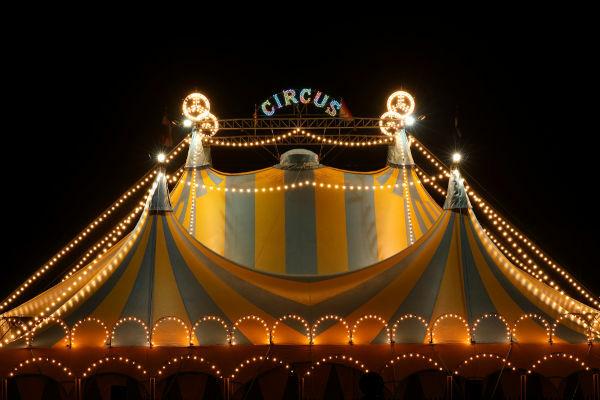O Circus day is a commemorative date celebrated nationally on March 27th. This date is a tribute to Piolin clown, one of the most famous clowns who have ever performed at the Brazil and which had great recognition in the 1920s, being honored even by intellectuals modernists.
Accessalso: March 27 – World Theater Day
origin of the circus
Circus Day is a national commemorative date that celebrates and honors the circus, this important place of culture and leisure. THE artcircus it is quite traditional and was established in our country in the mid-19th century. This commemorative date is celebrated on March 27 due to the birth of AbelardChick, known as the forclownPiolin.

Piolin was very successful in the first half of the 20th century, especially during the 1920s, and was recognized as one of the great clowns who have already performed in Brazilian circuses. Abelardo Pinto was born in Ribeirão Preto, on March 27, 1887, while his parents accompanied the caravan of the circus where they worked.
As Pinto was born into a family of circus artists, he became involved with this art very early on. Since he was a child, he already performed small numbers like contortionist and tightrope walker, but his career took other directions when he became a clown, in 1917. On that occasion, he assumed the artistic name of clownbald.
In the early 1920s, Pinto took over as a clown in the Çirco Queirolo brothers, taking the place of Chicharrão, who had given up his position for not receiving a salary increase.
Pinto then assumed the artistic name of Piolin clown and soon became a great success. From 1925, he joined the Circusalcibiades and started making frequent presentations at the wideofPaissandu, in Sao Paulo. The name he adopted was given by a colleague who mocked his long, spindly legs. The word piolin comes from Spanish and means “string”.
Piolin's performances, especially during his time at Largo do Paissandu, earned him much recognition for his humor and for the acrobatics he knew how to perform. They caught the attention of important people of the time, like the president of Brazil from 1926 to 1930, Washington Luis.
At presentations also caught the attention of modernists, an intellectual group of great influence at the time. They understood Piolin as a representation of the true national artist, and names like Tarsila de Amaral and Mario de Andrade they praised the clown's performances.
The modernists' appreciation for Piolin was so great that they decided to honor him, in 1929, through the event BanquetAnthropophagic. Years later, in the fiftieth anniversary of Modern Art Week, in 1972, another tribute was paid to him. Circus Day, therefore, was established as a reminder of one of its great representatives, born on March 27th.
Accessalso: June 19 – Brazilian Cinema Day
circus history

The practice of circus arts as a form of leisure and entertainment has existed since the beginning of THEseniority, but the circus as we know it emerged in XVIII century, in England. It is attributed to the ex-military Philipastley the feat of founding the first modern circus.
Astley's Circus was founded in London, and soon such establishments became popular in England and Europe. Astley himself, for example, founded circuses in other cities, such as Paris. Over time, other continents, such as America, already had their own circuses.
In addition, tours of circus artists taking place in several European cities began to become more and more common. Circuses were popular places because they brought entertainment and leisure, with presentations of tightrope walkers, jugglers, contortionists, between others.
The term circus derives from CircusMaximus, the place, in the Roman Empire, in which presentations were held such as races and gladiator fights. They were public places that served as entertainment points for the Roman population.
By Daniel Neves Silva
History teacher
Source: Brazil School - https://brasilescola.uol.com.br/datas-comemorativas/dia-circo27-marco.htm


